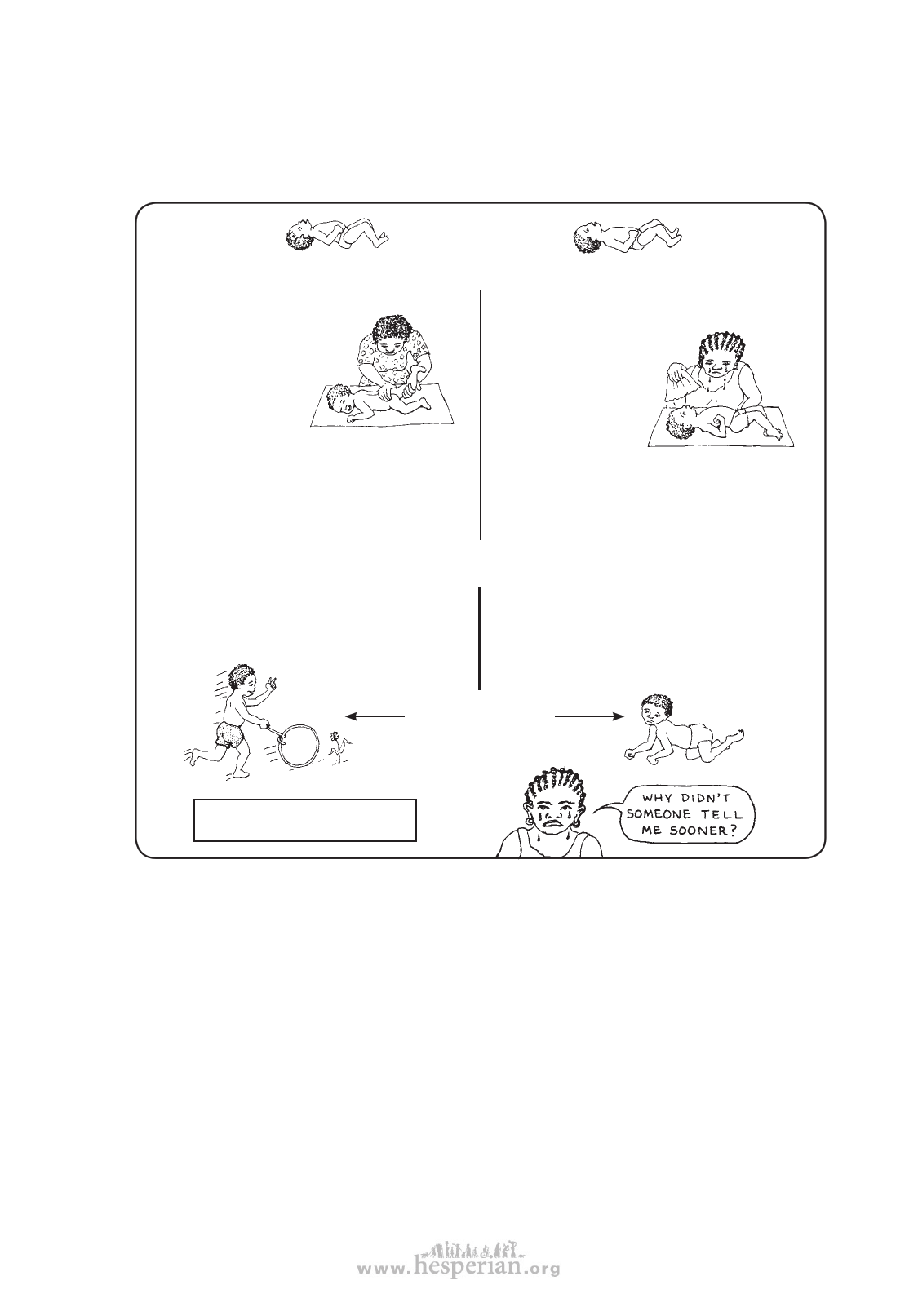
EXERCISES
When should range-of-motion exercises be started?
Early! Start before any loss in range of motion begins. With gentleness and caution,
help a severely ill or recently paralyzed child to do range-of-motion exercises from the
first few days. For precautions, see p. 374 to 376. Starting range-of-motion exercises
EARLY can reduce or prevent disability.
KOFI AND MEDA
Kofi and Meda got meningitis on the same day. With quick, good medical treatment
both survived. But both had suffered brain damage that left their bodies stiff and bent.
371
From the time his
fever dropped, Kofi’s
mother did exercises
with him—2 times
every day.
As he got better,
she also played with Little by little Kofi’s
him a lot—in ways
body began to loosen up.
that helped him
stretch and bend
all joints as much as possible.
Meda’s mother
cared for her child
as best she could,
but no one told her
about exercises.
Meda’s body became more
and more tight and bent.
In both children the muscle spasms gradually went away. By 6
months both could control their body movements almost normally.
Because Kofi’s joints were kept flexible, as
his muscle control came back he learned to
use his body nearly as well as any child his
age.
When Meda’s muscle control returned,
his muscles had shortened so much that he
could not straighten his hips or knees enough
to walk. He could only crawl, and his body
became more and more deformed.
RESULTS
WITH AND WITHOUT
RANGE-OF-MOTION
EXERCISES
It is much easier to prevent these
problems than to correct them.
For how long should range-of-motion exercises be continued?
To prevent contractures or deformities, range-of-motion exercises often need to
be continued all through life. Therefore it is important that a child learn to move the
affected parts of his body through their full range of motion as part of work, play,
and daily activity. If the range of motion remains good, and the child seems to be
getting enough motion through daily activities, then the exercises can be done less
often. Or simply check every few weeks to be sure there is no loss in range of motion.
Which joints?
Exercise all the joints that the child does not move through normal range of motion
during her daily activities. For a child who is very ill or newly paralyzed, this may mean
exercising all the joints of the body. For a child with one paralyzed limb, range-of-
motion exercises usually only need to be done with that limb (including the hip or
shoulder). Children with arthritis may need range-of-motion exercises in all their joints,
including the back, neck, and even jaw and ribs.
disabled village children